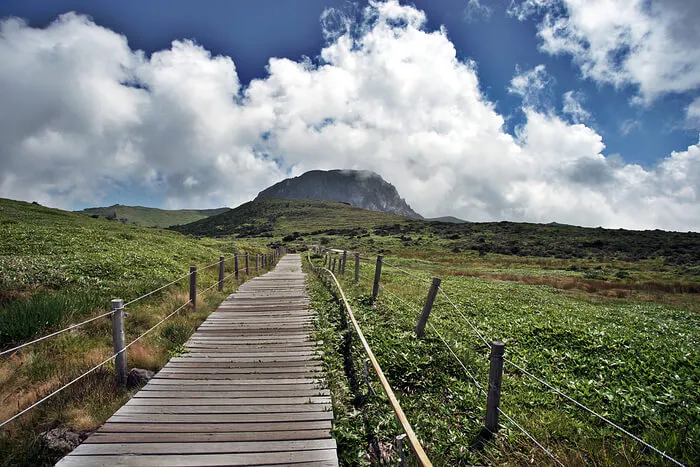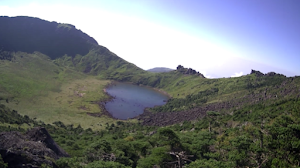Hallasan National Park is a stunning natural park located in Jeju Special Self-Governing Province, South Korea. Hallasan Mountain, which rises in the center of Jeju Island, is the tallest mountain in South Korea and a habitat for unique ecosystems and diverse flora and fauna. Here is an English description of Hallasan National Park.
Key Features:
Natural Heritage:
- Hallasan is a UNESCO World Natural Heritage Site, recognized for its beautiful natural scenery and ecological value.
- It has a high academic value due to its diverse vegetation distribution and is a treasure trove of flora and fauna.
Various Hiking Trails:
- Hallasan has various hiking trails, including Seongpanak, Gwaneumsa, Yeongsil, Eorimok, and Donnaeko.
- Each course has different difficulty levels and scenery, so you can choose a course that suits your fitness and experience.
- The summit of Hallasan, Baengnokdam, can only be reached via the Seongpanak and Gwaneumsa trails.
Baengnokdam Crater Lake:
- At the summit of Hallasan is a volcanic lake called Baengnokdam.
- Baengnokdam boasts beautiful scenery and is a symbol of Hallasan.
Ecosystem:
- Hallasan has a balanced distribution of subtropical, temperate, and subarctic plants.
- It is home to rare plants such as Korean fir and Manchurian fir, and various animals such as roe deer and badgers.
Oreum (Volcanic Cones):
- Around Hallasan, there are about 360 oreums, creating a unique landscape.
Additional Information:
It is recommended to make a reservation in advance through the Hallasan National Park reservation system before visiting Hallasan.
Hallasan has severe weather changes, so you should be well-prepared when hiking.
In Hallasan National Park, you must take your trash back with you and use only designated trails to protect the environment.
Hallasan National Park is an attractive tourist destination that offers beautiful natural scenery and various attractions.

